Daily Tour
Unlimited
English
About this tour
The Annapurna Base Camp trek, nestled in the breathtaking Annapurna region of Nepal, beckons adventure enthusiasts with its captivating blend of diverse landscapes and rich cultural experiences. Commencing in Nayapul, the gateway to the region, the trek unfolds over 7 to 14 days, traversing terraced fields, rhododendron forests, and traditional villages inhabited by Gurung and Magar communities.
Get ready to embark on an unforgettable journey deep into the heart of the majestic Annapurna region. Join us as we lace up our boots and set out to conquer the iconic Annapurna Base Camp trek in just 9 days. This adventure promises breathtaking mountain vistas, immersive cultural experiences, and the thrill of pushing your limits amidst some of the world’s most stunning landscapes. From lush forests and cascading waterfalls to towering snow-capped peaks, every step of this trek is filled with wonder and discovery. So, pack your sense of adventure and let’s dive into the exhilarating challenge of the Annapurna Base Camp trek.
The trail, marked by suspension bridges over gushing rivers, introduces trekkers to the cultural tapestry of the region, adorned with traditional houses, fluttering prayer flags, and Buddhist monasteries.As the ascent progresses, the grandeur of the Annapurna Massif and the iconic Machapuchare reveals itself, culminating in the awe-inspiring Annapurna Base Camp at an elevation of 4,130 meters.
The panoramic views of snow-capped peaks, especially during sunrise and sunset, offer a visual symphony. Accommodation in local teahouses provides a glimpse into Nepalese mountain hospitality, and the trek demands a consideration of altitude challenges, emphasizing acclimatization and physical fitness.
The best times to embark on this journey are spring and autumn, while obtaining the necessary permits adds to the preparation. The Annapurna Base Camp trek is an unforgettable adventure, promising an immersive experience in nature’s grandeur and the cultural richness of the region.
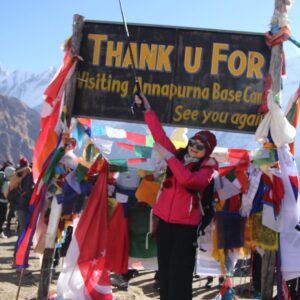
The Annapurna Base Camp (ABC) trek is a popular and breathtaking trekking route in the Annapurna region of Nepal. It offers a diverse range of landscapes, cultural experiences, and stunning views of the Annapurna mountain range.
Descriptive analysis of the Annapurna Base Camp trek:
- Location and Starting Point:
- The trek begins in Nayapul, which is easily accessible from Pokhara. Nayapul serves as the gateway to the Annapurna region.
- Duration:
- The trek usually takes around 7 to 14 days, depending on the chosen itinerary and trekking pace.
- Trail and Terrain:
- The trail takes trekkers through a variety of landscapes, including terraced fields, rhododendron forests, and traditional villages. The terrain varies from steep ascents to gentle descents.
- Trekkers will cross several suspension bridges over rivers and streams, adding an adventurous element to the journey.
- Cultural Highlights:
- En route, trekkers pass through Gurung and Magar villages, providing opportunities to experience the local culture and hospitality.
- Traditional houses, prayer flags, and Buddhist monasteries dot the landscape, offering glimpses into the rich cultural heritage of the region.
- Scenic Views:
- The highlight of the trek is reaching the Annapurna Base Camp, situated at an altitude of 4,130 meters (13,550 feet). The panoramic views of the Annapurna Massif, Machapuchare (Fishtail), and other surrounding peaks are awe-inspiring.
- Sunrise and sunset views from the base camp are particularly magical, with the snow-capped peaks changing colors.
- Tea Houses and Accommodation:
- The trek is supported by a network of teahouses along the route, providing basic accommodation and meals. Trekkers can enjoy local and international cuisine, giving a taste of Nepalese mountain hospitality.
- Altitude Challenges:
- The trek involves gaining significant altitude, and acclimatization is crucial to avoid altitude sickness. Itineraries are designed to allow for gradual acclimatization, with rest days at key points.
- Best Time to Trek:
- The ideal trekking seasons are spring (March to May) and autumn (September to November) when the weather is stable, and the views are clear.
- Permits:
- Trekkers need to obtain the Annapurna Conservation Area Permit (ACAP) and the Trekkers’ Information Management System (TIMS) card before starting the trek.
- Challenges and Considerations:
- Weather conditions can change rapidly, and trekkers should be prepared for varying temperatures and possible precipitation.
- Physical fitness is essential, as the trek involves both ascent and descent at high altitudes.
The Annapurna Base Camp trek is a memorable adventure, offering a perfect blend of natural beauty, cultural exploration, and a sense of accomplishment as trekkers reach the base of some of the world’s highest peaks.
As we bid farewell to the rugged trails and towering peaks of the Annapurna region, we do so with hearts full of gratitude and memories to last a lifetime. Our 9-day journey to Annapurna Base Camp has been nothing short of extraordinary – a whirlwind of breathtaking scenery, newfound friendships, and personal triumphs.
Though our footsteps may fade from these mountain paths, the spirit of adventure and the beauty of the Himalayas will remain etched in our souls forever. Until we meet again amidst the towering peaks, may the memories of our Annapurna adventure continue to inspire and uplift us, reminding us of the boundless wonders that await those who dare to explore.
Highlights
- Mesmerizing sceneries of Mt. Annapurna 1 4130m, Annapurna II 7937m, Annapurna III, 7355m, Annapurna IV 7525m, Annapurna South 7219m, Machhapuchre 6999m, Dhaulagiri 8167m, Hiunchuli 6441m and Many Other Ice Peak Mountain
- Lush forests of Rhododendrons and Oaks
- Numerous rivers, suspension bridge and waterfall
- Rich local people Culture and Tradition in Annapurna Basecamp Villages
- Flora and Fauna of Annapurna Conservation Areas
- Natural Hot Spring in Jhinu Danda
- Traditional Sherpa Villages, Culture, Traditions and Hospitality
- Warm-Hearthed People of Annapurna Region
Included/Excluded
- Airport Pick up and Drop by Private Car upon arrival and departure
- Hotel Accomodation (Shared Room for Minimum 2 Pax and Single Room for Private Trip) in Kathmandu & Pokhara as per Itinerary
- All clean Standard Teahouses (Shared Room for Minimum 2 Pax and Single Room for Private Trip) in SInuwa, Daurali, Machhapuchhre Basecamp and Annapurna Basecamp and as per Package booked
- Flight Ticket from Kathmandu to Pokhara (both ways)
- Jeep from Pokhara to Nayapul & Mutque (both ways)
- Meals 3 x a day as per mentioned in Itinerary
- Company Duffle Bag to lend for trekking
- Sleeping Bag to lend for trekking
- Seasonal Fruits during trekking
- Professional Experienced Licensed English Speaking Guide
- Porter (1 Porter for 2 People with maximum luggage 25 kgs)
- Annapurna Conversation Trekking Permit & Government Tax
- Nepal Visa Online Application Service
- Emergency Evacuation Management / Service by Horse or Helicopter
- Farewell Dinner before Departure
- Official Trekking Certificate from our Company
- Flight ticket to Nepal & Travel Insurance
- Tourist Visa On Arrival Fee --> 15 Days = USD 30, 30 Days = USD 50
- Tips for Guide & Porter
- Extra Accommodation which is caused by your early arrival or late departure other than the trek date, and if you are back to Kathmandu early from the trek due to any problem or rescue (other personal reasons).
- Your package includes only 1 x airport transfer (pick up & drop) to & from Kathmandu Airport and Pokhara Airport. If you have to return back to hotel again and again because of bad weather problem, it will be your personal extra charges
- Horse Rent / Helicopter Cost/Expenses for Emergency Evacuation or Personal Request
- Personal Expenses for trekking such as mountain gear or equipments, shopping, wifi/nepal simcard, phone/battery charge, hot water/shower, extra personal meals, drinks (mineral water), snacks, laundry etc
- Other Personal Expenses which are not included in the above facilities.
Itinerary
On the first day, depart from Kathmandu in the early morning for a 6-7 hour scenic drive to Pokhara. Enjoy picturesque views of rural landscapes and the Trishuli River, with a lunch stop en route. Arrive in Pokhara in the afternoon, check in to your hotel, and relish the stunning views of the Annapurna and Dhaulagiri mountain ranges. This leisurely day sets the stage for the upcoming trekking adventure in the Annapurna region.
After a hearty breakfast, a scenic drive takes you to Jhinu, where you'll savor a delicious lunch. The trek officially commences here, leading you through terraced fields and charming villages. The day's trek culminates in Chhomrong, a beautiful Gurung settlement nestled in the lap of the Annapurna range.
As you leave Chhomrong, the trail winds through lush forests and rhododendron groves. Crossing the scenic Chhomrong Khola, the trek progresses to Dovan. The day's journey unveils captivating glimpses of the surrounding peaks, creating a sense of anticipation for the days ahead.
Ascending steadily, the trail leads you through Hinku Cave and onward to Deurali. The landscape transforms as you approach higher altitudes, with panoramic views of snow-capped peaks becoming more prominent. Deurali serves as a serene resting point, preparing you for the ascent to the renowned Annapurna Base Camp.
Today marks the culmination of your trek as you reach the iconic Annapurna Base Camp. The trail unveils the majestic amphitheater of peaks, including Annapurna I, Machapuchare, and Hiunchuli. Spend the afternoon absorbing the breathtaking surroundings, immersing yourself in the grandeur of the Himalayas.
Descending from the Annapurna Sanctuary, the trek retraces its steps to Bamboo. The changing landscape and descent provide a different perspective of the mountains. Bamboo, nestled amidst bamboo groves, offers a serene overnight stop.
As you retrace the trail through dense forests and charming villages, you reach Chhomrong. The familiar sights bring a sense of accomplishment, and the evening is spent relishing the camaraderie forged during the trek.
The final trekking day takes you to Jhinu Danda, where you can enjoy a relaxing soak in the natural hot springs. After lunch, a scenic drive brings you back to Pokhara, allowing you to reminisce about the adventure and celebrate your achievements.
Durations
Languages
Frequently asked questions
The Annapurna Base Camp trek typically spans 9 days and 8 nights, covering a distance of approximately 110 kilometers round trip. Each day's trekking duration varies based on the terrain and altitude gain. On average, trekkers can expect to walk for around 5-7 hours per day, covering a distance of approximately 10-15 kilometers. However, the duration may vary depending on factors such as individual fitness levels, weather conditions, and acclimatization needs.
The best time to undertake the Annapurna Base Camp trek is during the spring (March to May) and autumn (September to November) seasons. During these months, the weather is generally stable, with clear skies, mild temperatures, and minimal precipitation, making for ideal trekking conditions. The spring season brings blooming rhododendrons and vibrant vegetation, adding to the scenic beauty of the trek. Similarly, autumn offers crisp, clear days with stunning views of the surrounding mountains.
The Annapurna Base Camp trek is considered moderately challenging. While it does not involve technical climbing, it does require a good level of physical fitness and stamina due to the long hours of walking and altitude gain. Trekkers will encounter various terrains, including steep ascents and descents, rocky paths, and occasional stream crossings. Proper preparation, including cardiovascular training, strength exercises, and altitude acclimatization, can help mitigate the challenges of the trek.
Trekkers undertaking the Annapurna Base Camp trek need to obtain several permits to enter the region. Firstly, a TIMS (Trekkers' Information Management System) card is required, which helps track trekkers and ensures their safety. Additionally, a permit for the Annapurna Conservation Area Project (ACAP) is also necessary, as the trek passes through protected areas managed by the conservation project. These permits regulate access to the trekking routes, ensure environmental conservation, and contribute to local development initiatives. It is essential for trekkers to obtain these permits in advance and adhere to the rules and regulations set forth by the authorities.
Annapurna Base Camp is situated at an altitude of 4,130 meters (13,550 feet) above sea level. Proper acclimatization is crucial to prevent altitude sickness, which can occur due to the decreased oxygen levels at higher elevations. To acclimatize effectively, trekkers should ascend gradually, taking regular breaks and staying hydrated to allow their bodies to adjust to the altitude. It's also recommended to spend an extra day for acclimatization at higher elevations, such as Annapurna Base Camp, to reduce the risk of altitude-related complications. During this rest day, trekkers can explore the surrounding area, take short hikes, and relax to allow their bodies to adjust to the altitude.
Accommodation along the Annapurna Base Camp trek primarily consists of teahouses or lodges located in villages along the route. These teahouses offer basic yet comfortable lodging options, including dormitory-style rooms or private rooms with shared bathrooms. The facilities may vary from one teahouse to another, but typically include a dining area where trekkers can enjoy meals and socialize with fellow travelers. The teahouses provide meals such as dal bhat (rice with lentil soup), noodles, pasta, and other local and international dishes. While the accommodations are relatively simple, they offer a warm and welcoming atmosphere, allowing trekkers to rest and rejuvenate after a day of trekking amidst the stunning landscapes of the Annapurna region.
Safety is paramount while trekking in the Himalayas, including the Annapurna Base Camp trek. Trekkers should trek with a knowledgeable guide who is familiar with the terrain and can provide assistance in case of emergencies. It's also essential to carry essential items such as a first aid kit, water purification tablets, sunscreen, sunglasses, and a map or GPS device. Trekkers should ensure proper acclimatization by ascending gradually, staying hydrated, and listening to their bodies. It's also advisable to purchase travel insurance that covers trekking activities in remote areas. By taking these precautions and being prepared for potential hazards, trekkers can enjoy a safe and memorable journey through the breathtaking landscapes of the Annapurna region.
Packing the right gear and equipment is essential for a successful and enjoyable trek to Annapurna Base Camp. Trekkers should pack clothing suitable for a range of temperatures and weather conditions, including lightweight and moisture-wicking layers, a warm insulated jacket, waterproof and windproof outer layers, sturdy hiking boots, and comfortable socks. Other essential items include a sleeping bag rated for cold temperatures, a backpack, trekking poles, a first aid kit, sunscreen, sunglasses, a hat, gloves, and a headlamp or flashlight. It's also important to pack personal items such as toiletries, medications, a camera, and any necessary travel documents. Trekkers should pack light but efficiently, considering the changing weather conditions and rugged terrain encountered during the trek.
Trekkers should be respectful of the local culture, customs, and traditions while trekking through the Annapurna region. The area is home to diverse ethnic communities, including Gurung, Magar, and Thakali, each with their own unique traditions and way of life. It's essential to dress modestly and seek permission before taking photographs of people or religious sites. Additionally, trekkers should practice Leave No Trace principles to minimize their environmental impact, including properly disposing of waste, staying on designated trails, and avoiding disturbing wildlife or natural habitats. By respecting the local culture and environment, trekkers can contribute to the preservation of the natural and cultural heritage of the Annapurna region for future generations to enjoy.

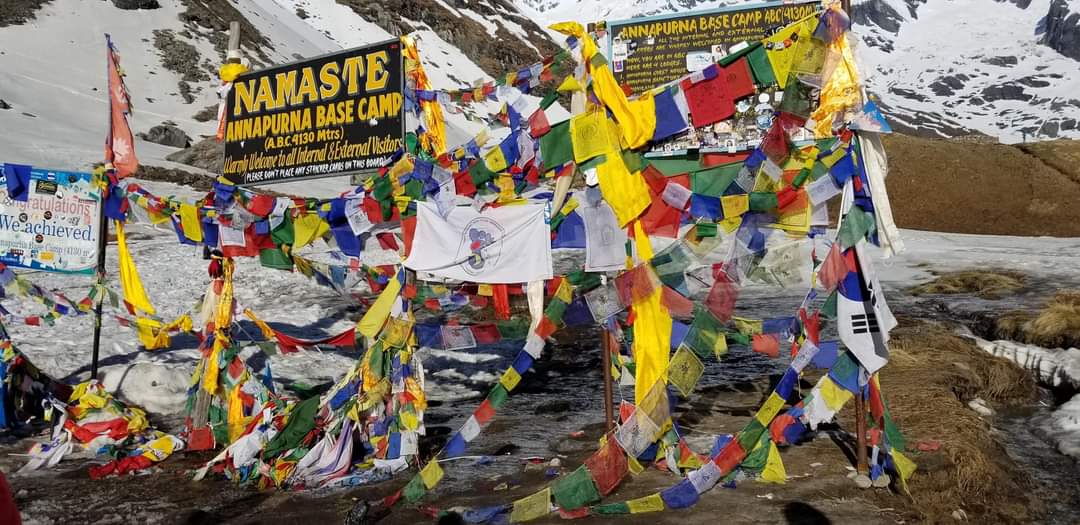

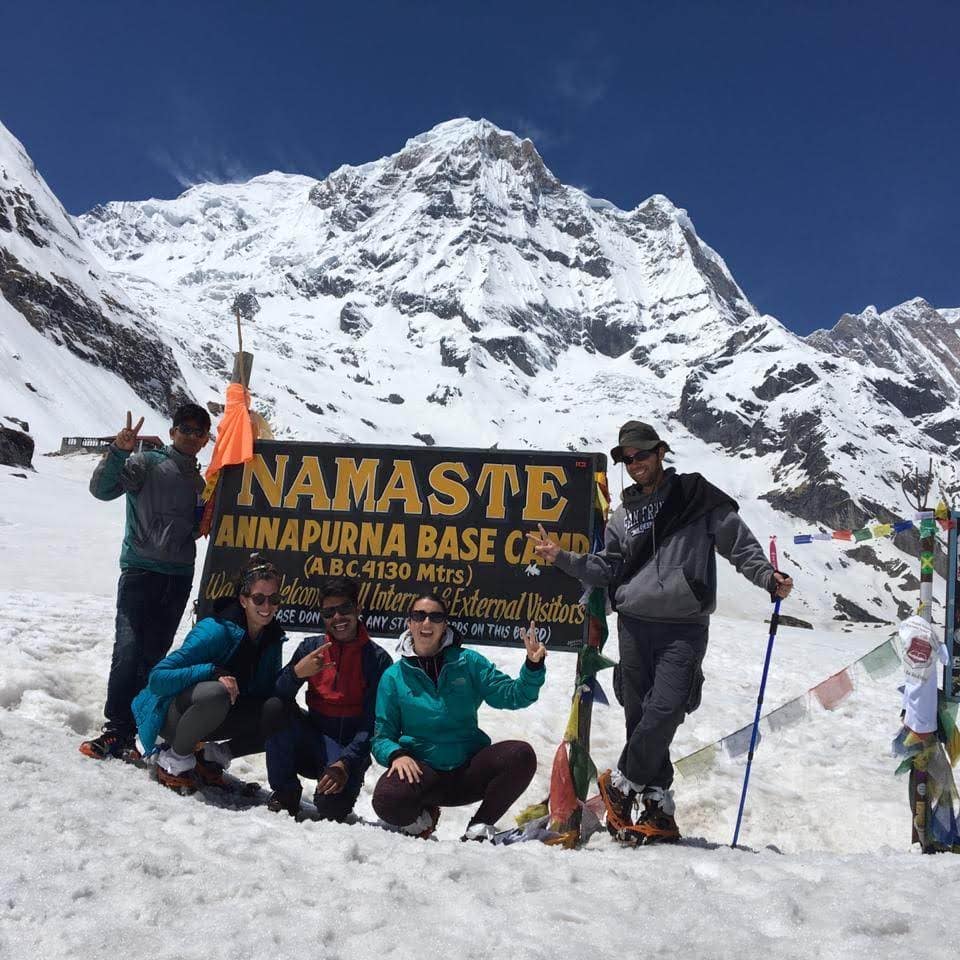
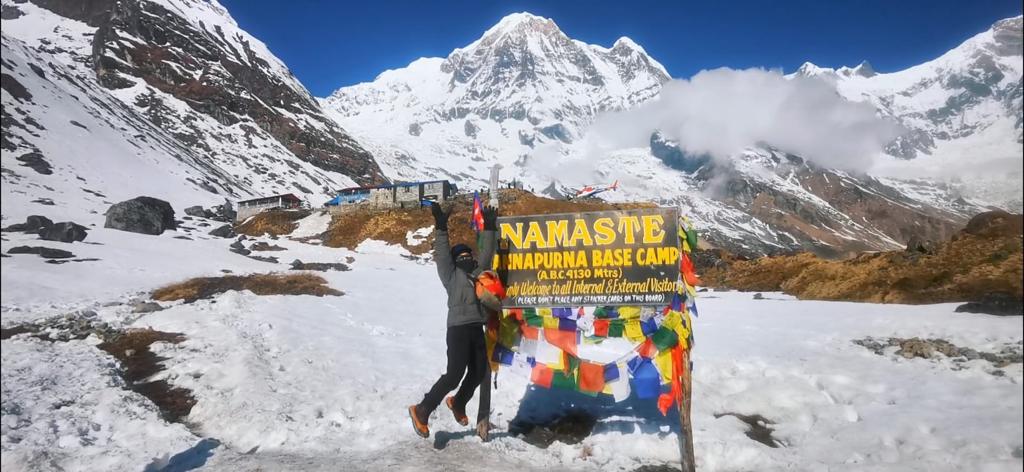

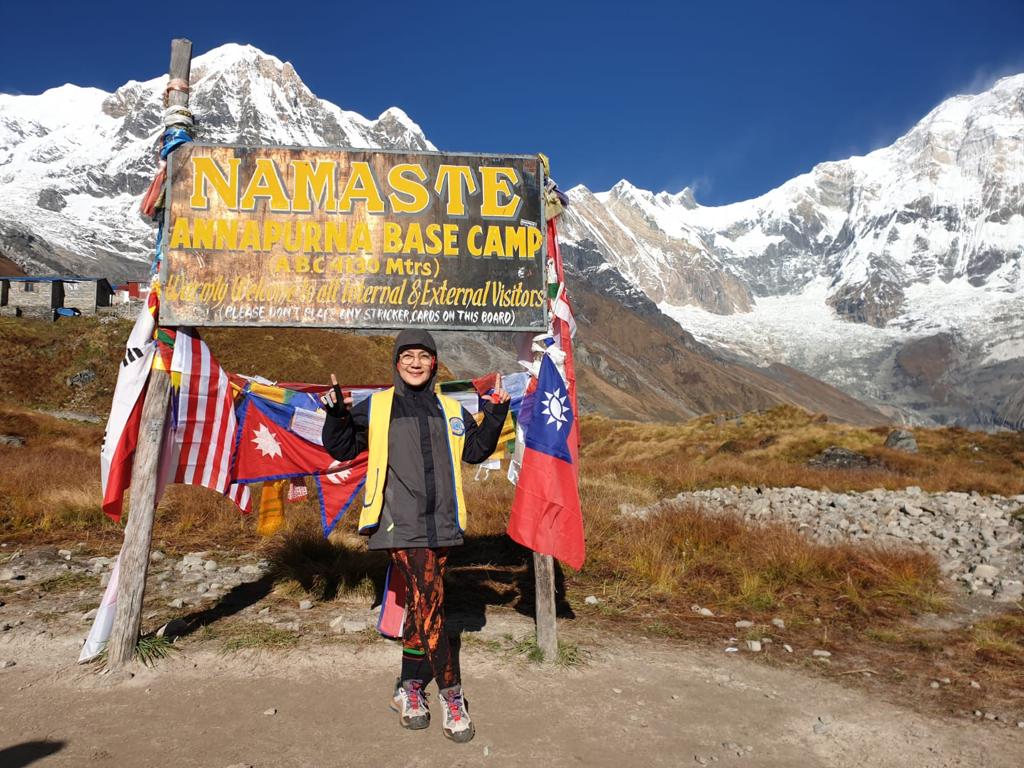
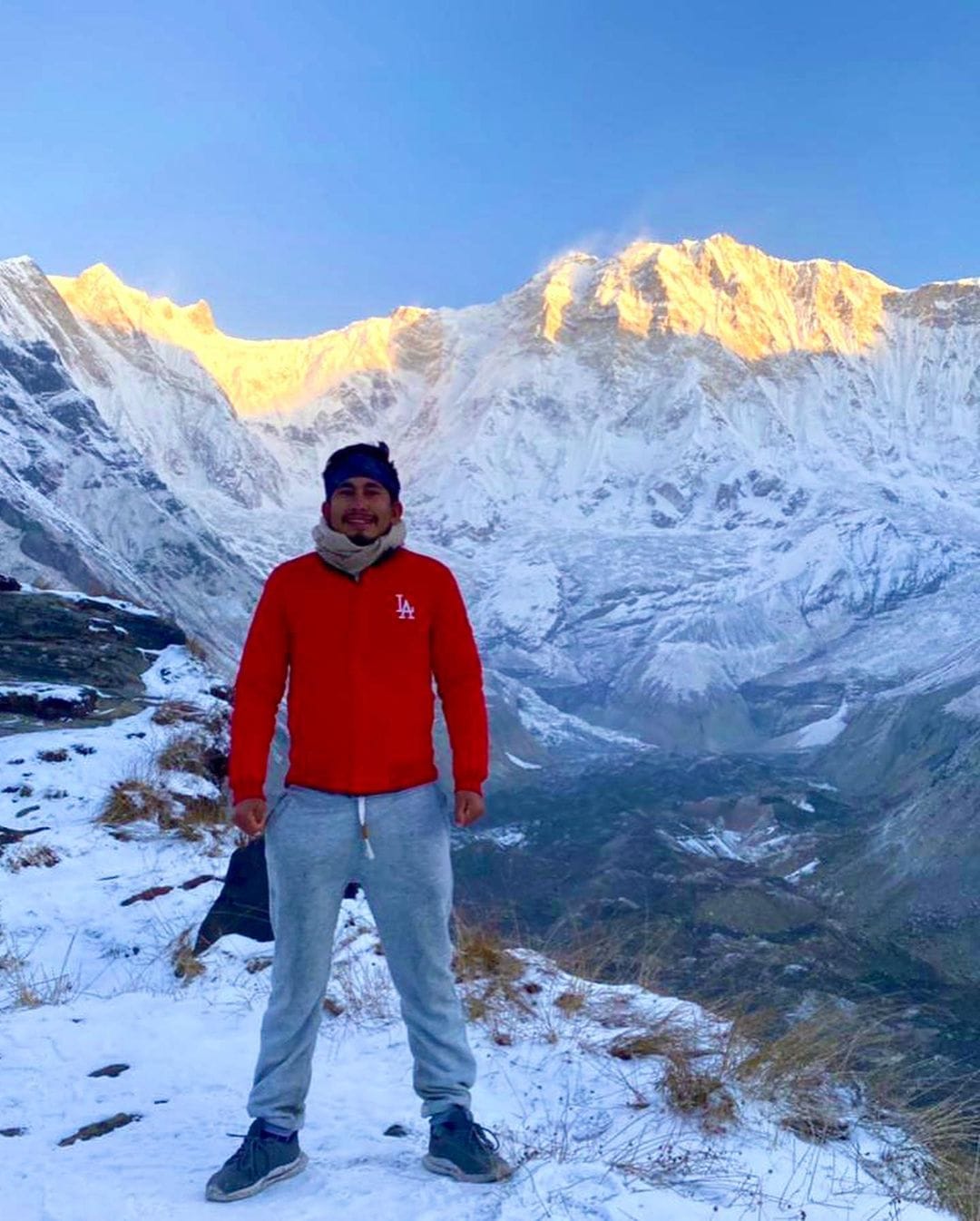
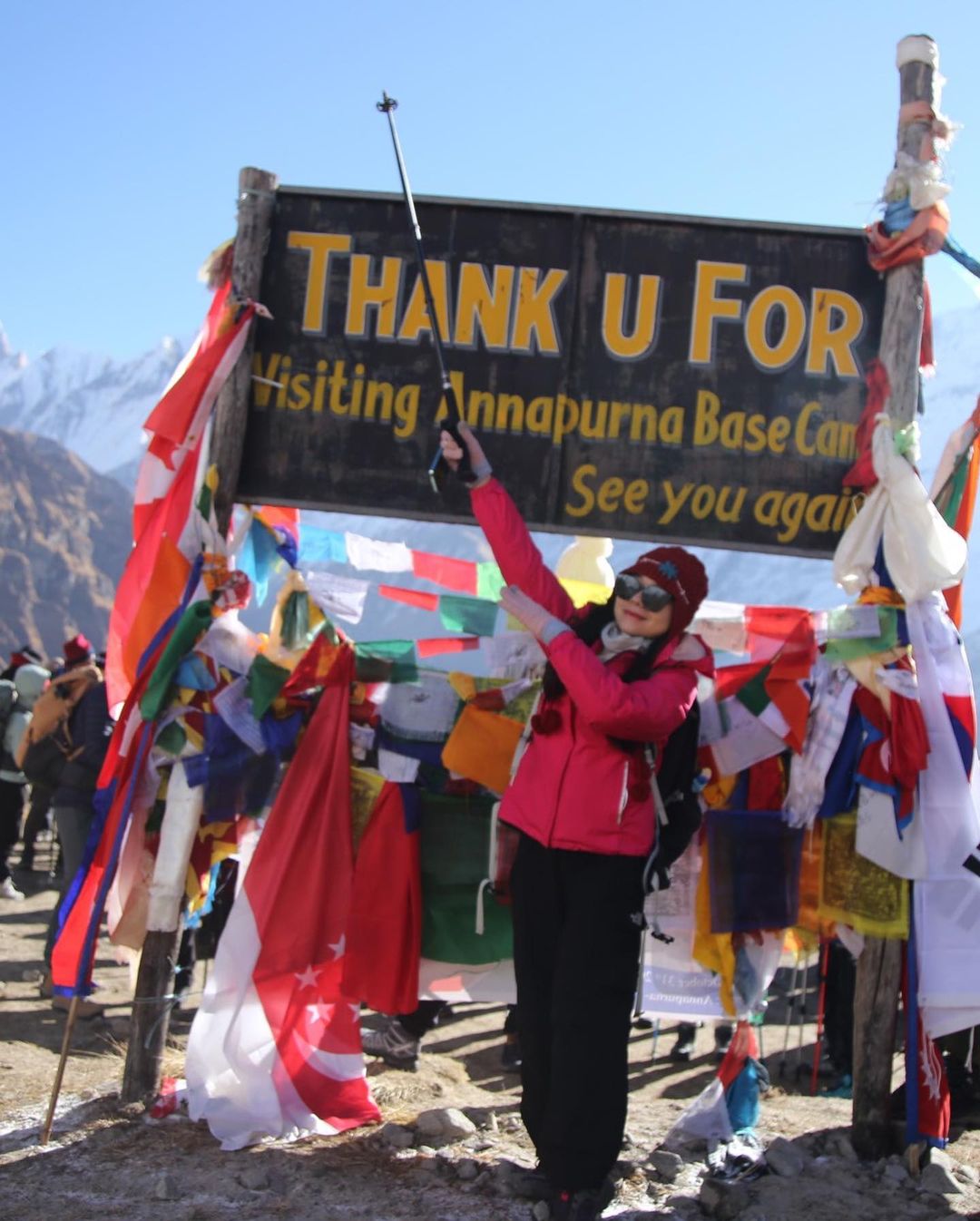
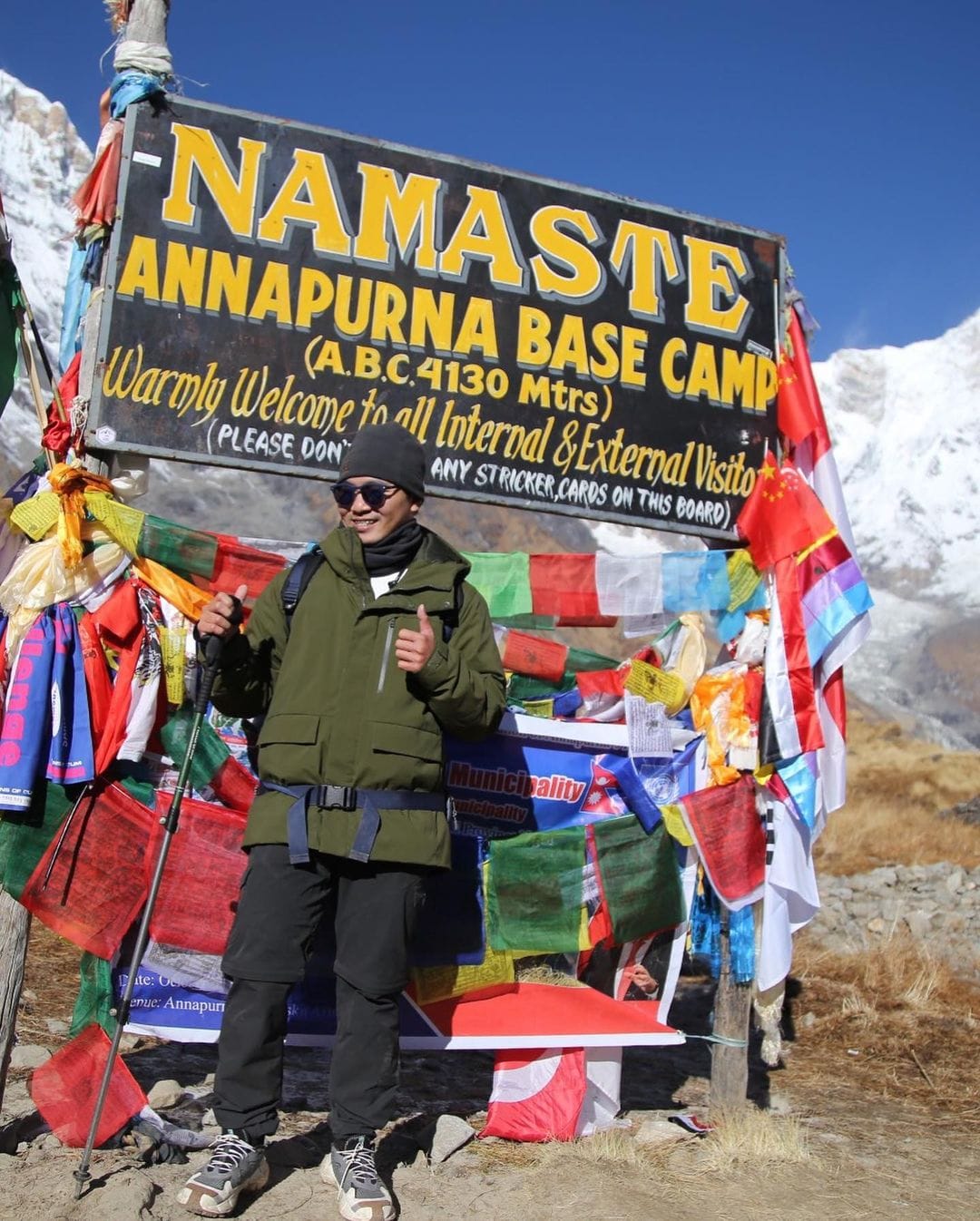
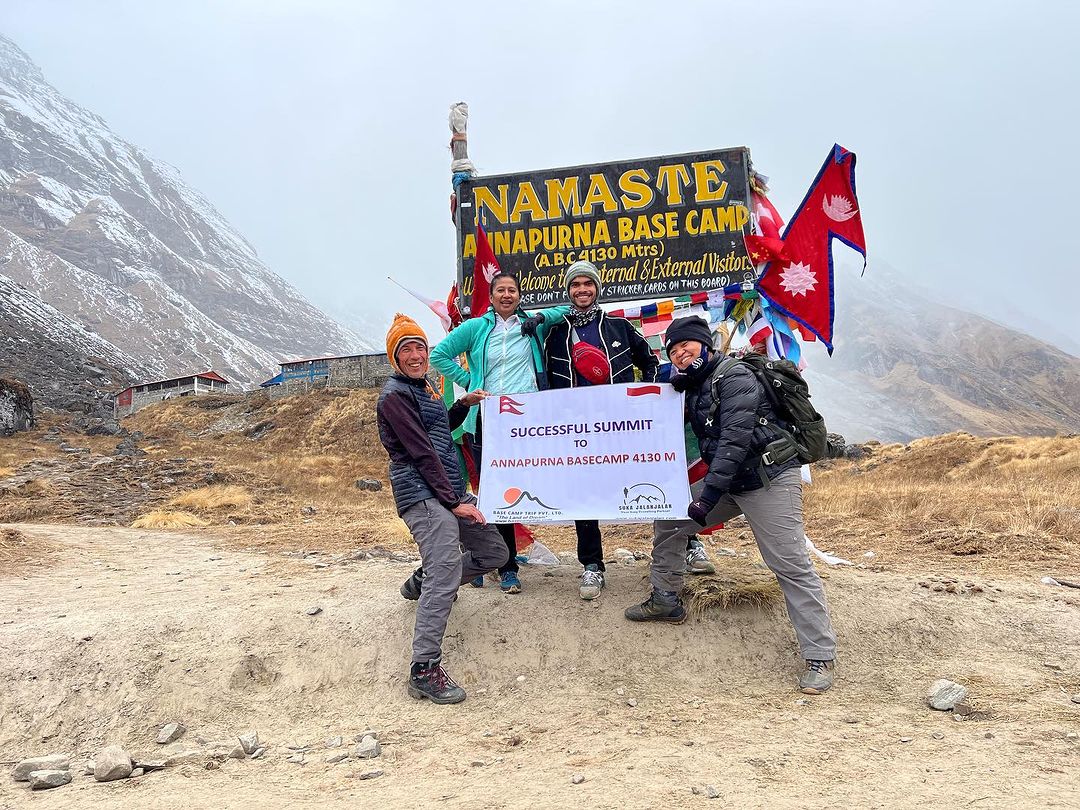


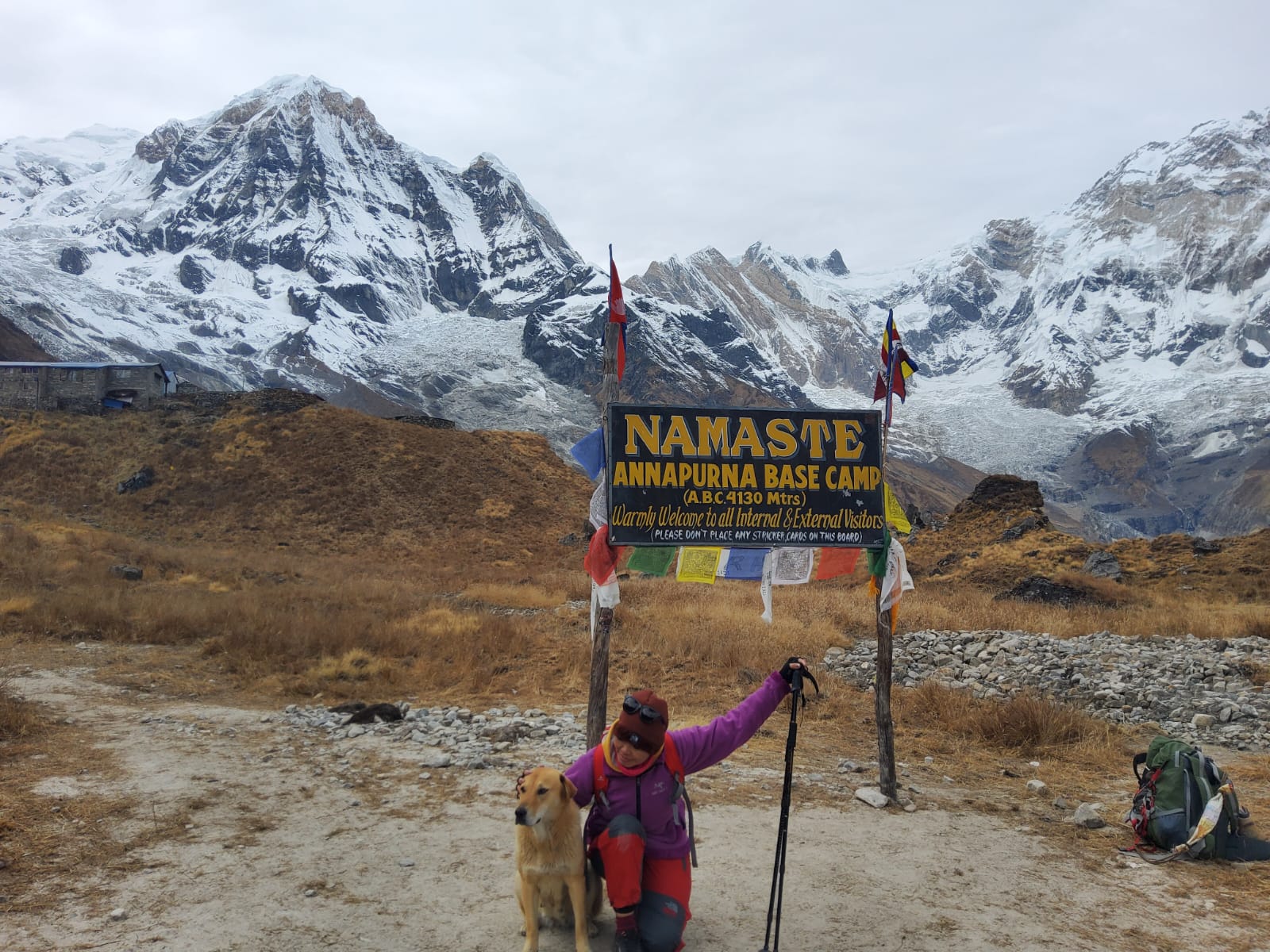
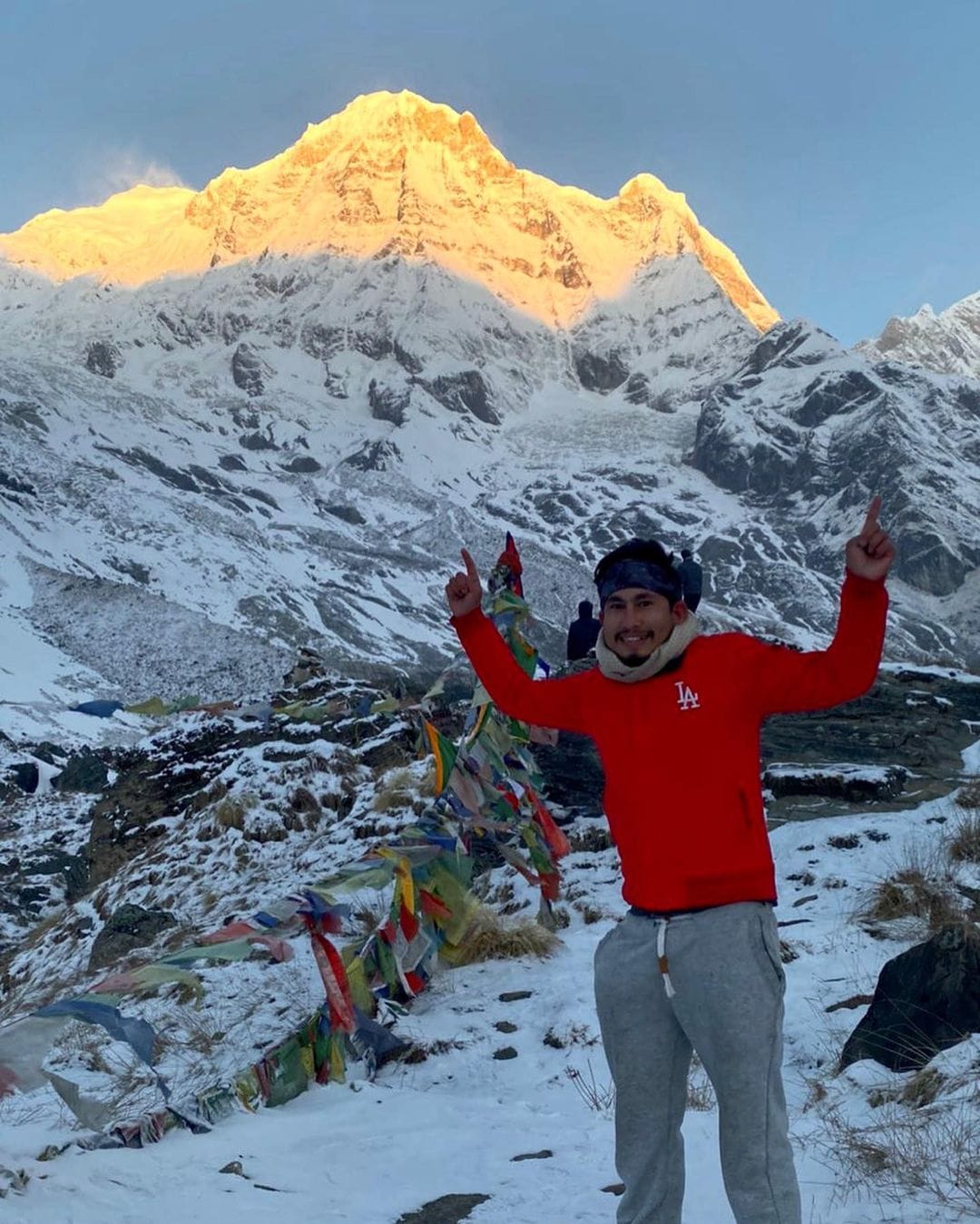
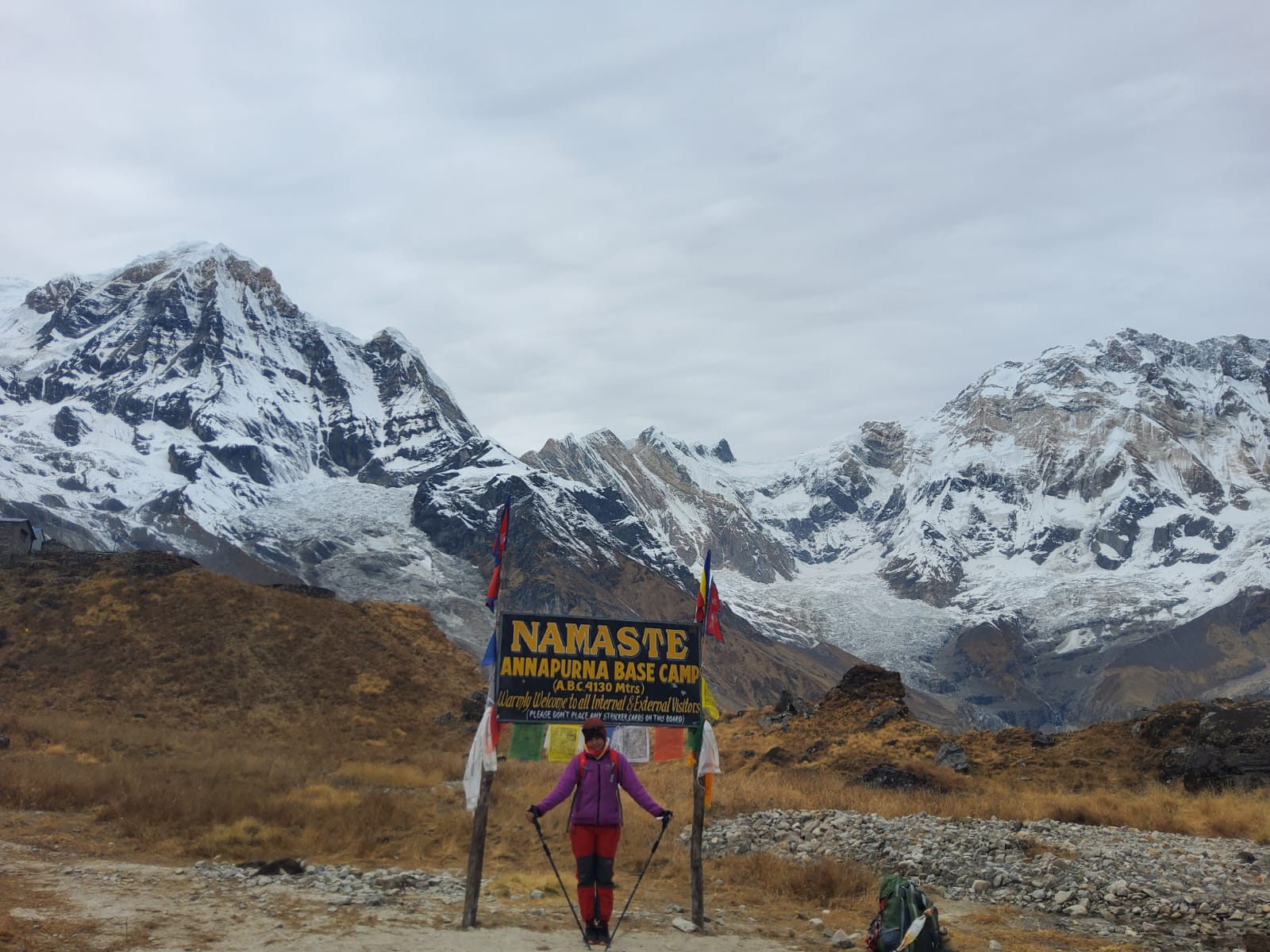
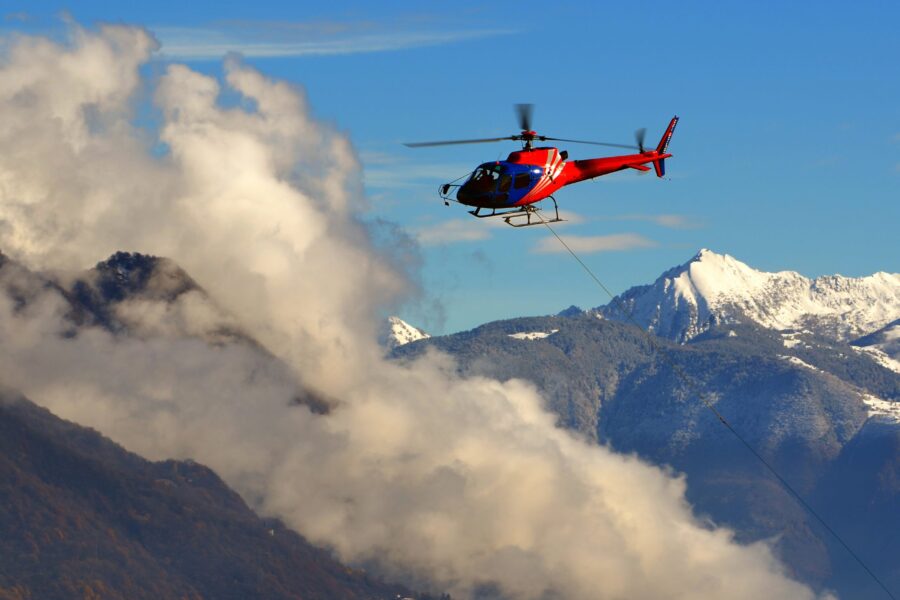

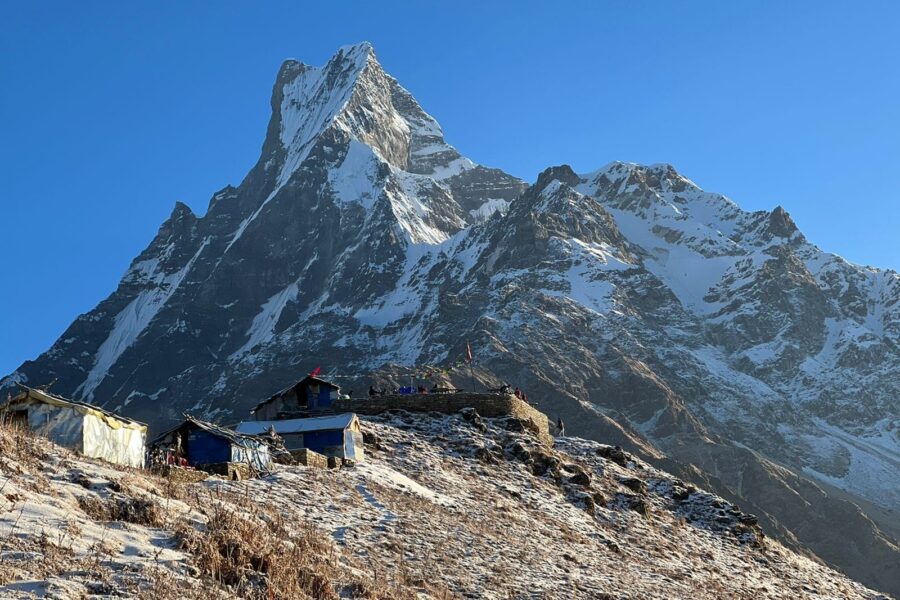


Magnificent beat ! I wish to apprentice while you amend your web site, how could i subscribe for a blog site? The account helped me a acceptable deal. I had been tiny bit acquainted of this your broadcast provided bright clear concept Also visit my web blog :: <a>ไทยเอากัน</a>